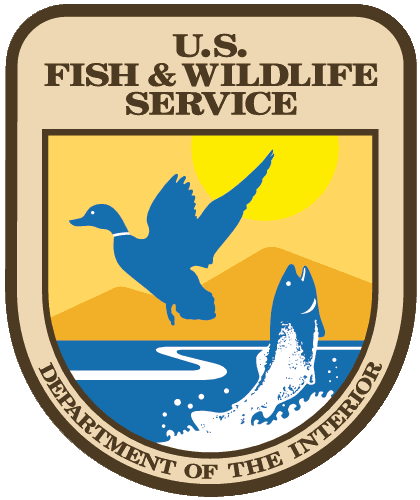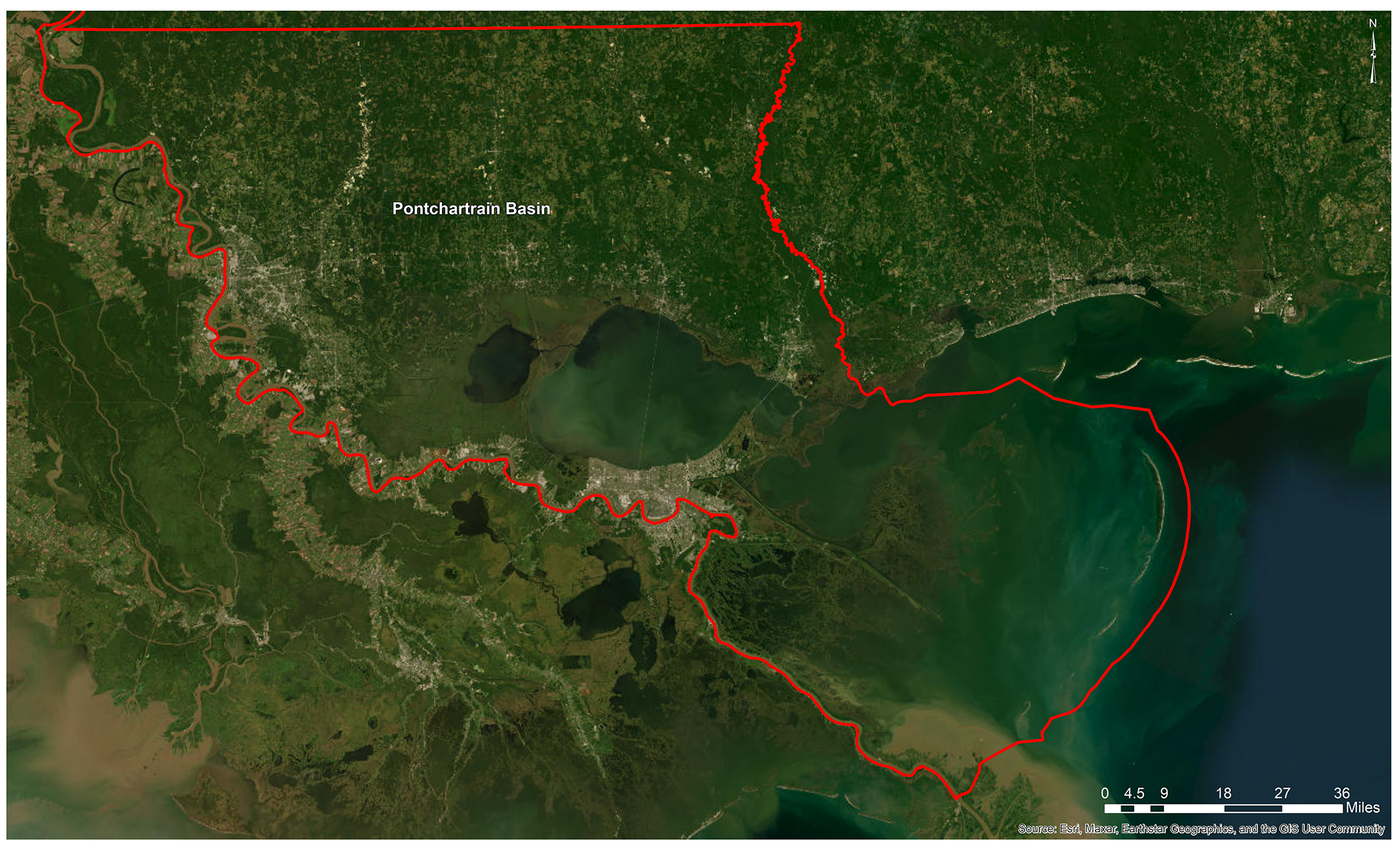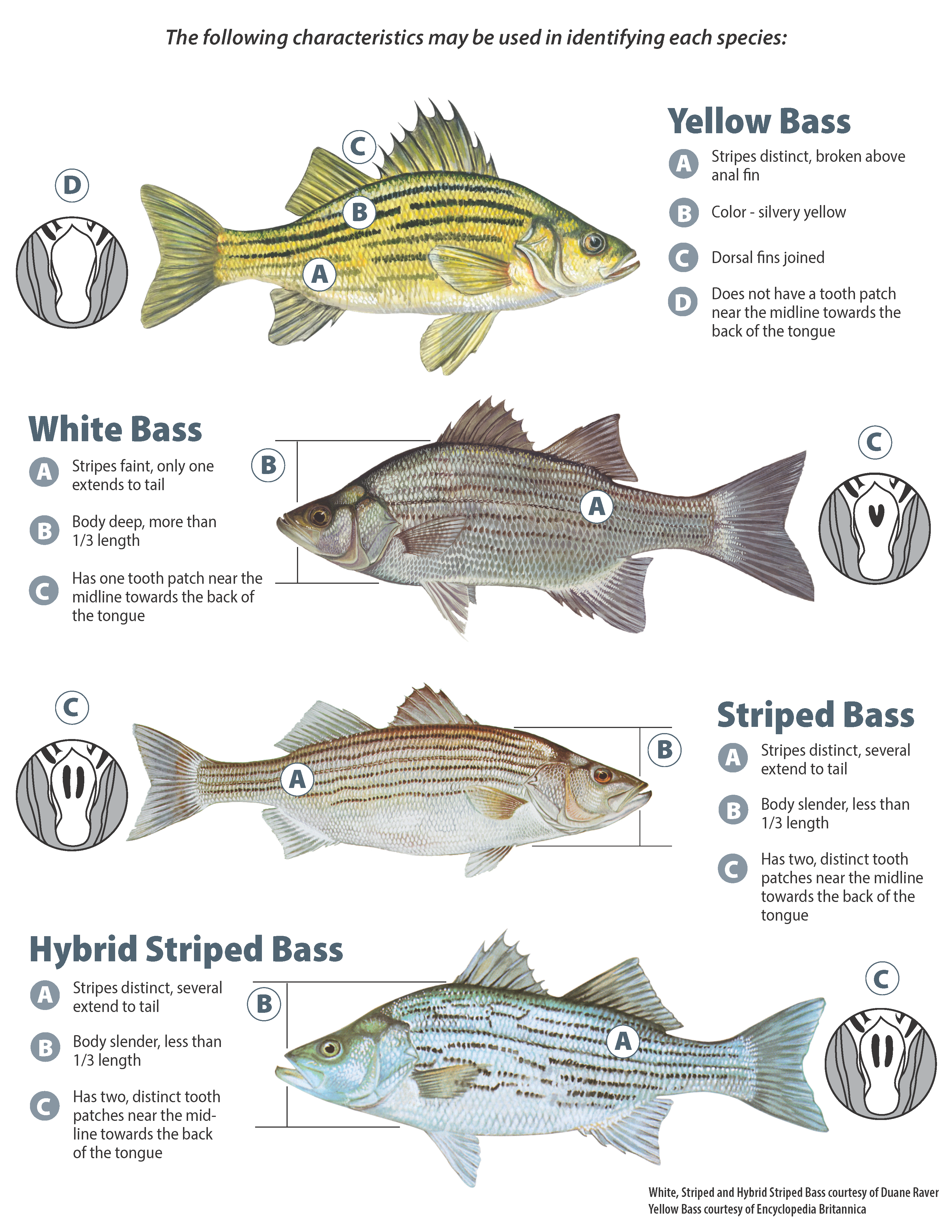Hot Topic: Striped Bass Collaborative Anglers Project (SBCAP)
Calling all Anglers: LDWF Needs Your Help!
The Louisiana Department of Wildlife and Fisheries is calling upon anglers to join LDWF’s Striped Bass Collaborative Anglers Project (SBCAP) to help support active management of Striped Bass in Louisiana! Help our biologists better understand the Striped Bass population in the Lake Pontchartrain and Pearl River Basins – which is the western edge of the historical range of the Gulf Strain Striped Bass population.
Anglers who fish any Louisiana waterbody east of the Mississippi River, including Lakes Maurepas, Pontchartrain, and Borgne (as well as all rivers that drain into those lakes) and the entire Pearl River system can help by submitting important biological data from their Striped Bass catches.
Striped Bass Sampling Area Through the Striped Bass Collaborative Anglers Project
How Can You Help?
We need tissue samples from the Striped Bass you catch. Data can be collected and submitted from harvested or released catches in 2 ways:
1. Through a fin clip kit
- Order your kit here. The form will ask if you want to order a fin clip kit. Choose 'yes' and complete your contact information.
- Once you receive your kit and have a fin clip ready for pickup, you can click the same link a second time, choose “no”, and schedule a pickup for your fin clip.
2. Or by having LDWF collect your cleaned carcass (only striped bass are needed for collection)
- Schedule a carcass pickup from an LDWF biologist. The form will ask if you want to order a fin clip kit, choose 'no' and complete the information requested in the form.
- LDWF is interested in carcasses from harvested Striped Bass (see the Striped Bass identification image below)
- Either the entire carcass can be submitted, or after fileting, the head with dorsal or pectoral fin still attached may be submitted (for this option to be utilized, an angler must record the total length in inches to the nearest 1/8th of an inch before cleaning the fish).
- Carcass samples may be fresh (on ice) or frozen.
- Frozen samples should be placed in a sealable plastic bag and labeled with the harvest date and general location (e.g., Lake Pontchartrain or Pearl River).
- Location of capture should be as specific as the angler feels comfortable with. However, at a minimum, the area must include the waterbody where the fish was caught.
Samples will be analyzed by LDWF biologists for age determination (otoliths) and genetic origin (Gulf Strain, Atlantic Strain, Natural/Stocked).
Tracking our Progress
The Louisiana Department of Wildlife and Fisheries (LDWF) is currently working with the United States Fish and Wildlife Service (USFWS) in a cooperative effort to restore a historical Gulf Strain Striped Bass population within the Pearl River and Lake Pontchartrain basins (study area). The project objectives can be broken down into three components:
- Analyze genetic makeup of Striped Bass captured in the study area. Because the overall goal of this project is to restore / enhance the Gulf Strain Striped Bass within the Pearl River and Lake Pontchartrain basins, we must identify, through genetic analysis, whether our resident Striped Bass are Gulf Strain, Atlantic Strain, or a combination of the two.
- Track seasonal movement of Striped Bass within the study area using acoustic telemetry. Gulf Striped Bass, especially larger adults, need access to cool water (<75°F) during the summer. Because those water temps are difficult to find in south Louisiana, this is thought to be one of the main limiting factors of growth and survival within the study area. Tracking these fish will allow us to understand their utilization of habitat and will hopefully lead us to spawning areas and summertime thermal refugia. Knowledge of these critical aspects will allow us to make better management decisions. To accomplish these objectives, LDWF biologists and USFWS biologists captured Striped Bass from the study area, implanted them with an acoustic transmitter, and released them back into the study area. As these fish move throughout the system, they will encounter receivers that have been strategically placed throughout the Pearl River and Lake Pontchartrain basins. Each time a tagged fish swims by one of these receivers, it is logged and stored. Every 4-6 weeks, biologists will offload data from each receiver. Ideally, this data will allow us to detect a pattern of movement and identify any areas where they congregate during the summer.
- Annual stocking of Gulf Strain Striped Bass into the Pearl River and Lake Pontchartrain basins. For the first time since 2009, LDWF will plan to stock Gulf Strain Striped Bass into the Pearl River and Lake Pontchartrain basins in the near future. These stockings will occur annually provided that the hatcheries along the Gulf Coast are able to fulfill stocking requests.
Anglers, please be on the lookout for Striped Bass with an orange tag near the posterior (rear) side of the dorsal fin. Each Striped Bass that was outfitted with an internal acoustic transmitter was also outfitted with one of these orange, external tags. While not a requirement, LDWF would greatly appreciate that any of these fish be photographed and released. The internal transmitters are providing valuable information, and we would like to keep them swimming for as long as possible. Lastly, please call the number on the tag or Jonathan Winslow at 985.847.2422 to report capture location and any other information you would like to share.
Angler Catch Information
Striped Bass Sample Results
X= Results are at the lab and will be updated once received
Striped Bass Sample Results
|
Project Photo Gallery





